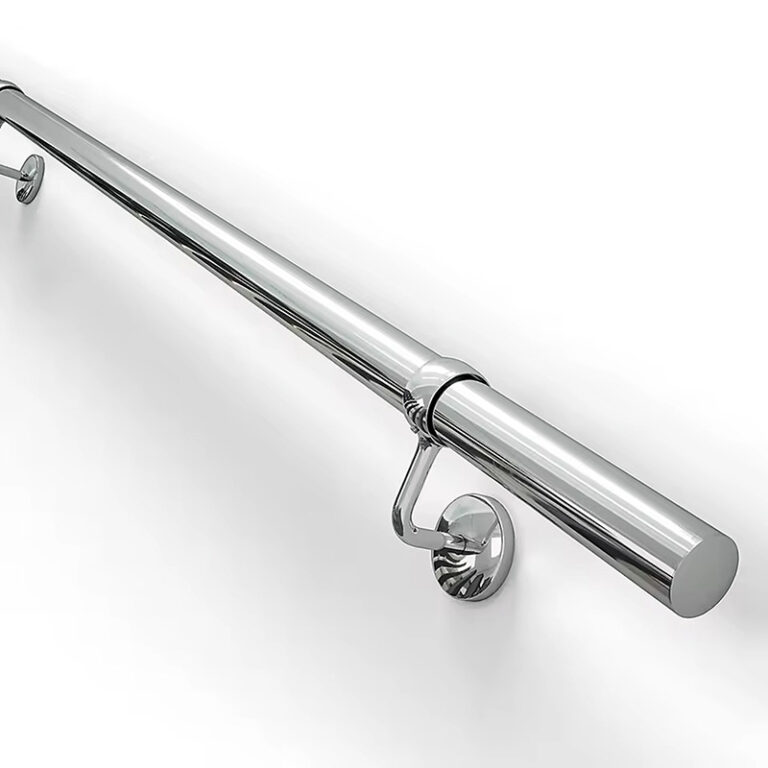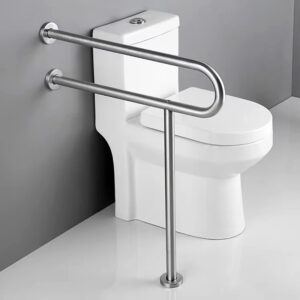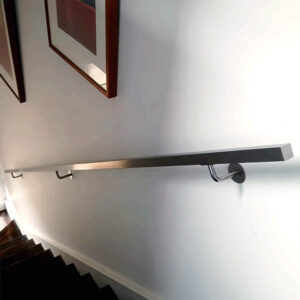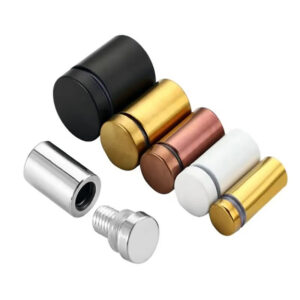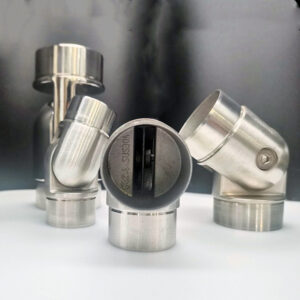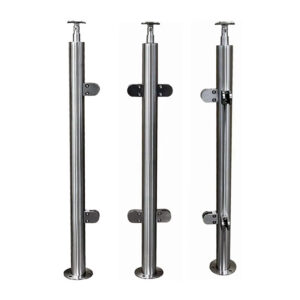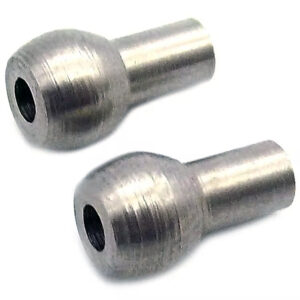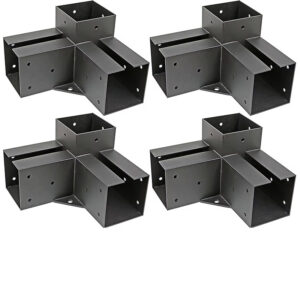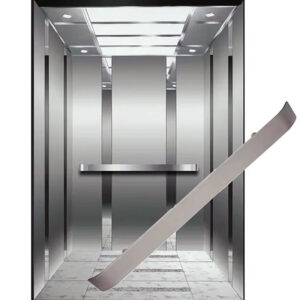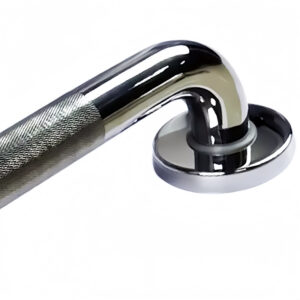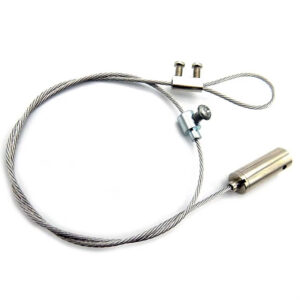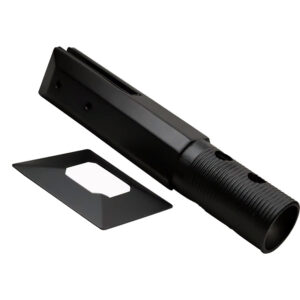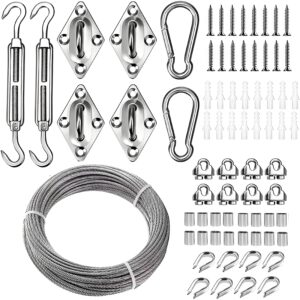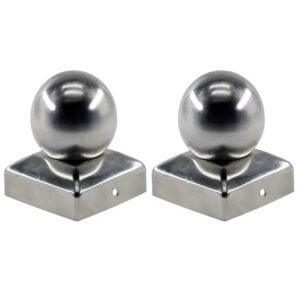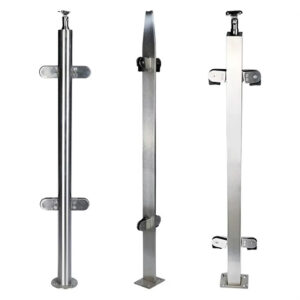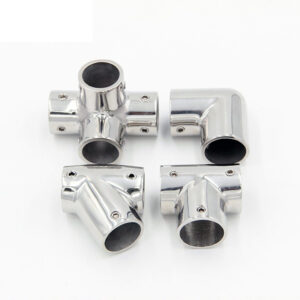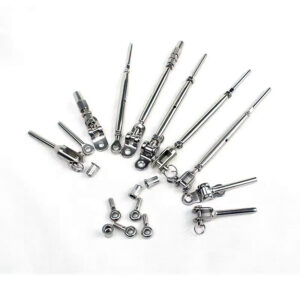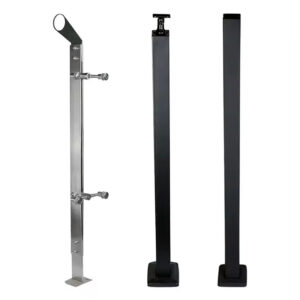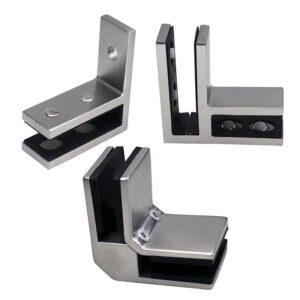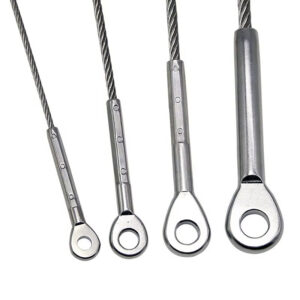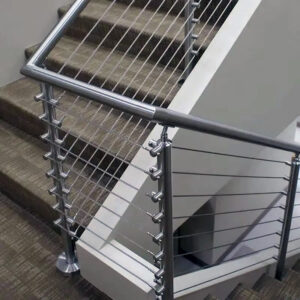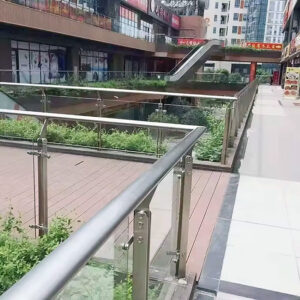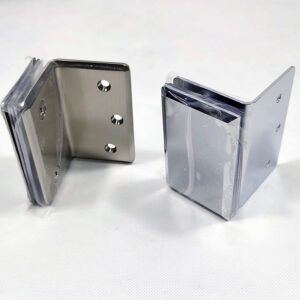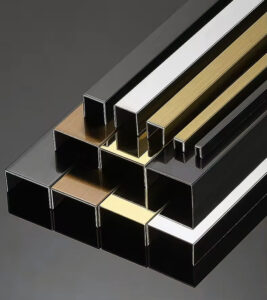Finding reliable wall handrail systems shouldn’t be a gamble with your project timeline and budget. After 23 years manufacturing stainless steel railing components, we’ve learned what contractors really need: parts that fit correctly the first time, materials that perform as specified, and systems that meet codes without engineering headaches. Whether you’re handling residential multi-unit projects or complex commercial installations, the right handrail system combination of proven materials, modular design, and manufacturing precision makes the difference between smooth project completion and costly delays.
Complete Wall Handrail Systems & Components
Handrail Mounting Systems
Our stainless steel wall handrails utilize four primary mounting configurations designed for different structural requirements. Wall-mount brackets provide direct attachment for standard drywall and masonry applications, handling up to 200 lbs concentrated load per IBC requirements. Surface-mount systems work for concrete and steel structures where through-bolt connections aren’t feasible. Post-mount configurations bridge longer spans while maintaining ADA-compliant 1.25-2″ gripping diameter. Continuous rail systems eliminate joints over extended runs, crucial for commercial applications requiring uninterrupted handholds.
Material Selection That Makes Sense
304 stainless steel handles most interior applications and protected exterior environments. It provides excellent corrosion resistance, maintains structural integrity under standard loads, and offers cost-effective performance for projects like office buildings, residential complexes, and retail spaces. For coastal environments, industrial facilities with chemical exposure, or exterior applications in harsh climates, 316L stainless steel delivers superior corrosion resistance. The added molybdenum content significantly extends service life in marine conditions—we’ve seen 316L handrails maintain structural integrity after 15+ years in direct salt spray environments.
Modular Component Integration
Wall handrail fabrication 304 stainless steel systems work best when components integrate seamlessly. Our mounting brackets, rail sections, end caps, and connection hardware follow standardized dimensions that eliminate field modification. Rail sections come in 6′, 8′, and 12′ lengths with precision-cut ends for clean joints. Adjustable brackets accommodate 1/4″ mounting variations common in real construction. Corner connections, both 90-degree and adjustable angles, maintain rail continuity while adapting to actual building geometry.
| Component Type | Material Options | Load Capacity | Standard Lengths |
|---|---|---|---|
| Wall Rail 1.5″ OD | 304/316L SS | 200 lbs concentrated | 6′, 8′, 12′ |
| Wall Rail 2″ OD | 304/316L SS | 250 lbs concentrated | 6′, 8′, 12′ |
| Mounting Brackets | 304/316L SS | 300 lbs per bracket | Standard spacing 4′-6′ |
| End Caps | 304/316L SS | Decorative/Functional | Match rail diameter |
Custom Manufacturing Capabilities
Commercial wall handrail systems ODM solutions address unique architectural requirements while maintaining code compliance. Our precision wall handrail components manufacturing handles custom lengths, specialized mounting configurations, and integration with existing building systems. After 23 years solving installation challenges, we’ve developed solutions for curved walls, angled installations, multi-level transitions, and accessibility compliance in retrofit situations.
Technical Performance Data
Material Specifications Comparison
| Property | 304 Stainless Steel | 316L Stainless Steel | Application Guide |
|---|---|---|---|
| Corrosion Resistance | Good | Excellent | 304: Interior/mild exterior; 316L: Marine/industrial |
| Tensile Strength | 75,000 psi min | 70,000 psi min | Both exceed structural requirements |
| Yield Strength | 30,000 psi min | 25,000 psi min | Adequate for 200+ lb loads |
| Cost Factor | 1.0x | 1.4-1.6x | Budget vs. environment consideration |
Load Performance Standards
| Installation Type | Design Load (IBC) | Test Load | Safety Factor | Deflection Limit |
|---|---|---|---|---|
| Residential | 200 lbs concentrated | 400 lbs | 2.0x | L/120 |
| Commercial | 200 lbs concentrated | 400 lbs | 2.0x | L/120 |
| Industrial | 200 lbs concentrated | 400 lbs | 2.0x | L/120 |
| Assembly Occupancy | 50 lbs/ft distributed | 100 lbs/ft | 2.0x | L/120 |
Real-World Applications & Results
Multi-Family Residential Projects
A 240-unit apartment complex in Denver required ADA-compliant handrails throughout common areas and exterior walkways. Using standardized 304 stainless steel wall handrails with modular mounting systems, installation time averaged 45 minutes per 20-foot section versus 90+ minutes for field-fabricated alternatives. Total project completion came in 3 days ahead of schedule, saving approximately $8,400 in labor costs. The modular approach also simplified inventory management—just four component types covered 95% of installation requirements.
▶ Discuss Your Multi-Unit Project ◀
Commercial Office Buildings
A 12-story office renovation in Atlanta needed handrails that integrated with existing architectural elements while meeting current accessibility codes. Custom wall handrail manufacturing provided 2″ diameter rails with specialized mounting brackets that attached to original terrazzo walls without structural modifications. Marine grade wall handrails 316L weren’t necessary, but 304 stainless with brushed finish matched existing hardware while providing 20+ year service life expectations.
Industrial & Manufacturing Facilities
Chemical processing plants require handrails that withstand aggressive environments while maintaining safety performance. Marine grade wall handrails 316L provide proven corrosion resistance in these applications. One Texas facility installed our 316L handrail systems in 2008—recent inspections show minimal surface degradation and full structural integrity. Maintenance costs have averaged less than $200 annually for 400+ linear feet of handrails, compared to $2,000+ annual repainting costs for carbon steel alternatives.
Coastal & Marine Applications
A waterfront hotel in South Carolina needed exterior handrails that could handle direct salt spray exposure. Marine grade wall handrails 316L with mirror-polished finish provided both corrosion resistance and aesthetic appeal. After 8 years of service, the handrails show only minor surface staining easily removed with standard stainless steel cleaner. Comparable aluminum handrail systems at nearby properties required replacement within 5-7 years due to pitting corrosion.
| Project Type | Material Used | Installation Time | Maintenance (Annual) | Service Life Expected |
|---|---|---|---|---|
| Multi-Family | 304 SS | 45 min/20ft | $50/100ft | 15-20 years |
| Commercial Office | 304 SS | 60 min/20ft | $75/100ft | 20+ years |
| Industrial | 316L SS | 50 min/20ft | $25/100ft | 20+ years |
| Marine/Coastal | 316L SS | 55 min/20ft | $100/100ft | 15-20 years |
Installation Support & System Integration
Modular Installation Advantages
Precision wall handrail components eliminate common installation delays. Pre-drilled mounting holes align with standard stud spacing. Bracket adjustment range accommodates real-world construction tolerances without custom fabrication. Rail sections include alignment guides that ensure straight installations even with multiple installers. Connection hardware uses standard tools—no specialized equipment required.
▶ Get Installation Guidelines ◀
Quality Control That Prevents Problems
Manufacturing precision ensures components fit correctly the first time. All mounting brackets undergo dimensional inspection to ±0.030″ tolerance. Rail sections receive straightness checks within 1/8″ over 12-foot lengths. Surface finishes meet consistent standards—brushed finish maintains uniform grain direction, mirror polish achieves 320-grit equivalent appearance. These controls prevent field rework that delays project completion.
Technical Support Based on Experience
23 years of manufacturing experience means we’ve encountered most installation challenges. Our technical team provides design assistance for unusual mounting situations, load calculations for non-standard applications, and troubleshooting support when field conditions don’t match plans. Response time averages under 4 hours for technical inquiries during business hours.
Frequently Asked Questions
How do I choose between 304 and 316L stainless steel for my project?
304 stainless steel handles most interior applications and exterior environments without direct salt exposure or chemical contact. Choose 316L for coastal locations within 5 miles of ocean, industrial facilities with chemical processes, or anywhere iron staining from standard stainless steel creates maintenance issues. The material cost difference typically adds 40-60% to total handrail cost, but 316L often reduces long-term maintenance expenses in aggressive environments.
What’s the realistic installation time for wall handrail systems?
Modular systems average 45-60 minutes per 20-foot section with standard mounting conditions. This includes layout, bracket installation, rail mounting, and cleanup. Factors that increase time include: masonry drilling (+25%), custom rail cuts (+15%), and accessibility requirements for occupied buildings (+30%). Compare this to field-fabricated systems requiring 90+ minutes per section plus potential return trips for corrections.
How do modular components handle custom architectural requirements?
Standard components accommodate about 80% of architectural variations through adjustable brackets, multiple rail diameters, and various mounting configurations. For remaining applications, custom wall handrail manufacturing provides engineered solutions using standard connection methods. This approach maintains cost efficiency while solving unique requirements—typically adding 10-15% to standard system cost versus 50-100% for completely custom fabrication.
What inventory strategy works best for distributors and contractors?
Focus on high-turnover basics: 304 stainless steel wall handrails in 1.5″ and 2″ diameters, standard mounting brackets, and common connection hardware. Stock 6-foot and 12-foot rail lengths to minimize cutting waste. Keep 316L components for coastal markets or special-order from reliable suppliers with 2-3 week delivery. This strategy covers 85% of applications while minimizing carrying costs.
What maintenance should building owners expect?
304 stainless steel requires periodic cleaning with standard stainless steel cleaner—typically 2-4 times annually in normal environments. Light surface scratches blend with brushed finishes. 316L systems need similar cleaning frequency but show better resistance to water spotting and environmental staining. Budget approximately $1-3 per linear foot annually for routine maintenance including cleaning supplies and labor.
How do your handrail systems ensure code compliance?
Our wall handrail systems meet IBC, ADA, and local code requirements for dimensional standards, load capacity, and accessibility. Standard 1.5″ diameter provides required gripping surface, mounting height accommodates 34″-38″ ADA requirements, and bracket spacing ensures 200 lb concentrated load capacity. We provide load calculation documentation and dimensional drawings for permit submissions.
▶ Connect with Our Technical Team ◀
Competitive Analysis & Selection Criteria
Market Position Comparison
| Factor | Esang Metal | Standard Suppliers | Custom Fabricators | Import Alternatives |
|---|---|---|---|---|
| Lead Time | 2-3 weeks | 4-6 weeks | 6-12 weeks | 8-16 weeks |
| Component Precision | ±0.030″ | ±0.060″ | ±0.125″ | ±0.125″ |
| Technical Support | Direct engineering | Sales support | Project-specific | Limited |
| Inventory Integration | Modular system | Mixed compatibility | Project-only | Uncertain quality |
Selection Criteria Framework
Choose based on project requirements and timeline constraints. For standard commercial applications with predictable specifications, modular systems provide cost efficiency and reliable delivery. Complex architectural projects benefit from custom manufacturing capabilities backed by engineering support. Marine or industrial applications require material expertise—23 years of experience helps select appropriate grades and finishes for specific environments.
Budget considerations should include total project cost, not just material price. Faster installation, reduced field modifications, and lower long-term maintenance often offset higher initial component costs. Factor in technical support availability, supply chain reliability, and warranty coverage when comparing alternatives.
The combination of proven manufacturing experience, modular system efficiency, and custom capability provides flexible solutions for diverse handrail requirements. Whether you need standard residential components or engineered commercial systems, focusing on installation reliability and long-term performance delivers better project outcomes than lowest-price alternatives.
